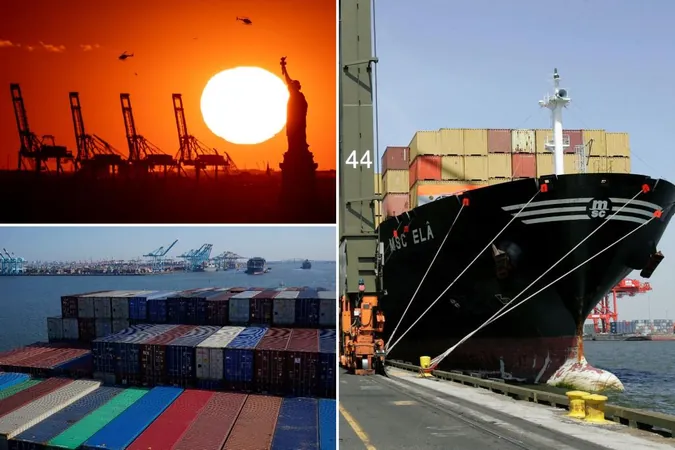
East Coast's Busiest Port Braces for Impending Strike: Could This Create Another Supply Chain Catastrophe?
2024-09-20
Ongoing Labor Negotiations at the Port of New York and New Jersey
The Port of New York and New Jersey, the busiest port on the Eastern Seaboard, is taking precautionary measures as unionized dockworkers prepare for a potential work stoppage. The International Longshoremen’s Association (ILA), representing approximately 85,000 workers across 36 ports, has issued a warning about a strike if a new labor agreement isn't reached before the expiration of their six-year contract at midnight on September 30.
Preparations to Mitigate Disruption
Beth Rooney, the port director for the Port Authority of New York and New Jersey, indicated that preparations are underway to minimize disruption and avert a backlog of shipping containers. As discussions continue on managing cargo flow ahead of the expected strike, Rooney noted that some ocean carriers have already started placing embargoes on cargo exports to the East Coast originating from the Midwest.
Potential Impact on the Economy
The ramifications of a strike could echo those experienced during the COVID-19 pandemic, where supply chain disruptions significantly impacted the economy. If dockworkers walk off the job, vessels may either wait in designated areas or slow their journeys to delay arrival at the port, similar to practices seen during previous crises. Once operations resume, the U.S. Coast Guard would guide the orderly entry of vessels back into the port.
Shipping Estimates and Union Demands
Current estimates show that 147 vessels, carrying about $34 billion worth of freight, are expected to arrive at East Coast and Gulf ports by October 1, with 38 of those vessels destined for the Port of New York/New Jersey. The longshoremen's union is advocating for substantial pay increases and demanding a complete prohibition on the automation of cranes and other equipment essential for freight handling.
Logistics Consequences and Economic Risks
With five of the nation’s ten largest ports located along the Gulf and East Coast—responsible for handling between 43% and 49% of all U.S. imports—a strike could inflict serious damage on the national economy. Even a temporary shutdown could send shockwaves through logistics, likely leading to increased traffic congestion as shippers redirect cargo to West Coast ports, where dockworkers are affiliated with a different union.
Impact of Potential Strike on Backlogs
Experts warn that resolving delays caused by a strike could be time-consuming; they estimate that for each day of stoppage, it takes a staggering four to six days to unwind the resulting backlog. Current pay rates show that top-tier port workers earn a base salary of approximately $39 an hour, translating to around $81,000 annually. With overtime and bonuses, some workers secure upwards of $200,000 a year.
Union and Management Negotiations
In 2019-2020, a report from the Waterfront Commission of New York Harbor revealed that nearly a third of longshoremen there made $200,000 or more. Both the union and the port authorities have remained tight-lipped about wage specifics amid ongoing negotiations. Meanwhile, the United States Maritime Alliance, representing port management, has expressed commitment to continuing negotiations to prevent the first national longshoremen strike since 1977. They have criticized the union for what they claim is a predetermined intent to strike, urging for negotiations to prevent a costly work stoppage detrimental to both parties.
Call for Immediate Dialogue
As this precarious situation unfolds, stakeholders are urging immediate dialogue to avert a disaster that could reverberate throughout the American economy. Stay tuned as this situation develops—will the looming strike lead to chaos in supply chains across the nation?





 Brasil (PT)
Brasil (PT)
 Canada (EN)
Canada (EN)
 Chile (ES)
Chile (ES)
 España (ES)
España (ES)
 France (FR)
France (FR)
 Hong Kong (EN)
Hong Kong (EN)
 Italia (IT)
Italia (IT)
 日本 (JA)
日本 (JA)
 Magyarország (HU)
Magyarország (HU)
 Norge (NO)
Norge (NO)
 Polska (PL)
Polska (PL)
 Schweiz (DE)
Schweiz (DE)
 Singapore (EN)
Singapore (EN)
 Sverige (SV)
Sverige (SV)
 Suomi (FI)
Suomi (FI)
 Türkiye (TR)
Türkiye (TR)